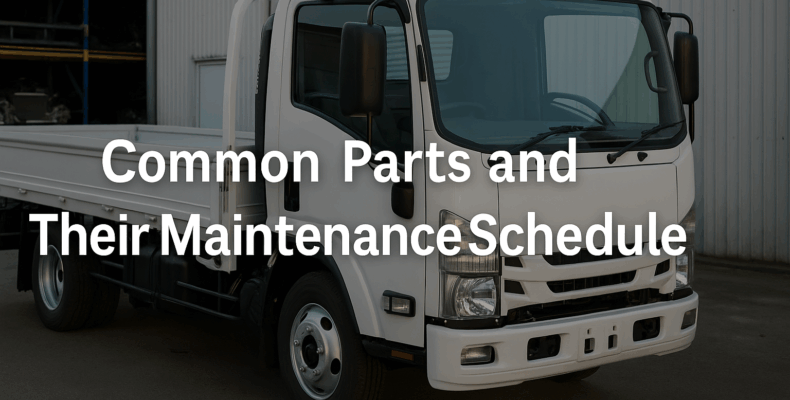Common Parts and Their Maintenance Schedule: A Guide for Japanese Truck Owners
Whether you’re managing a logistics company or running your own delivery service, one thing is clear — preventive maintenance saves time and money. Japanese trucks are known for their long lifespan, but even the most durable machines need regular care.
In this article, we’ll break down the most commonly serviced parts in Japanese trucks, explain when to inspect or replace them, and help you keep your vehicle in top shape. Plus, we’ll introduce trusted Japanese exporters who can provide quality trucks built for long-term reliability.
🧰 Why Regular Maintenance Matters
Skipping regular maintenance might save money in the short term. However, it often leads to bigger problems later. A well-maintained truck:
-
Runs more efficiently
-
Breaks down less often
-
Saves on fuel and repairs
-
Lasts longer and resells at a better price
Japanese brands like Hino, Isuzu, and Mitsubishi Fuso build trucks that are easy to maintain — as long as you stick to the proper schedule.
🔩 Most Commonly Maintained Parts
Here are the parts every truck owner should monitor regularly.
1. Engine Oil & Filter
-
Check: Every 5,000 to 10,000 km
-
Replace: With high-quality oil and filters
-
Tip: Dirty oil reduces engine performance fast
2. Brake Pads & Rotors
-
Check: Every 10,000 km
-
Replace: When below minimum thickness
-
Warning Sign: Squealing or reduced brake response
3. Air Filters
-
Check: Every 15,000 km
-
Replace: If clogged or dusty
-
Benefit: Better fuel economy and engine protection
4. Transmission Fluid
-
Check: Every 20,000–40,000 km
-
Replace: As per manufacturer guidelines
-
Watch for: Slipping or delayed shifting
5. Timing Belt or Chain
-
Check: After 100,000 km
-
Replace: If worn or cracked
-
Note: Failure can cause serious engine damage
6. Tires
-
Inspect: Every month
-
Replace: When tread is worn or sidewalls crack
-
Tip: Rotate tires for even wear
7. Battery
-
Check: Twice a year
-
Replace: Every 2–4 years
-
Signs of Failure: Slow starts, dim lights, corrosion
📅 Suggested Maintenance Timeline
| Part | Inspection Frequency | Replacement Timing |
|---|---|---|
| Engine Oil & Filter | Every 5,000–10,000 km | Every 5,000–10,000 km |
| Brake Pads & Rotors | Every 10,000 km | As needed |
| Air Filters | Every 15,000 km | When dirty |
| Transmission Fluid | Every 20,000 km | Every 40,000–60,000 km |
| Timing Belt/Chain | Every 100,000 km | Every 100,000–150,000 km |
| Tires | Monthly | When tread wears below 3mm |
| Battery | Every 6 months | Every 2–4 years |
🌍 Quality Trucks Start with Trusted Exporters
Of course, maintenance is easier when you start with a truck in good condition. That’s why choosing the right exporter matters.
Here are the Top 5 Trusted Japanese Used Truck Exporters for Global Buyers:
-
Every Co., Ltd.
-
Trust Co., Ltd.
-
Be Forward
-
PicknBuy24
-
Car From Japan
These companies are based in Japan and offer quality-assured vehicles, transparent processes, and international shipping.
👉 Learn more here:
Top 5 Trusted Japanese Used Truck Exporters for Global Buyers
🧾 Final Tips for Smart Maintenance
-
Keep a logbook. Track every service date and mileage.
-
Use OEM parts. They last longer and fit perfectly.
-
Follow seasonal checks. Cold weather affects batteries and fluids.
-
Listen to your truck. Odd sounds or smells are warning signs.
✅ Conclusion
Regular maintenance is the secret to long-lasting, high-performing Japanese trucks. By following a proper schedule and using genuine parts, you’ll reduce breakdowns, increase efficiency, and keep your business running smoothly.
Start with a reliable truck from a trusted exporter. Then, follow these simple steps — and you’ll enjoy years of worry-free driving.
